The following contains moderate spoilers for the fourth episode of ‘Star Trek: Picard’ season two.Continuity is something that comes up in geek media a lot, from the Marvel Cinematic Universe to Star Wars to DC’s TV Arrowverse. It used to be a thing on…
Astro’s new budget A10 headset is made for players who want to look cute on stream
In today’s world of Twitch and Zoom a good headset is becoming a must-have item for their comfort and audio quality. But there are two major stopping blocks toward them being an everyday item: their high cost and unfriendly designs. No one wants to loo…
SteelSeries made small but welcome improvements to its Android gamepad
Mobile gaming has been a huge thing for a decade now but it’s only recently that accessory makers like Razer and Logitech have taken it seriously, offering gaming headsets made especially for phones. On the controller front, however, SteelSeries has b…
‘Discovery’ fully clicks into the philosophy of Star Trek with its fourth season finale
The following contains minor spoilers for season four, episode 14 of ‘Star Trek: Discovery.’
Season four has been an interesting one for Star Trek: Discovery. The show finally embraced a more episodic format, only to slide back into an ongoing storyline in the back half of the season. But today’s finale once again promises a return to the things that make Star Trek, well, Star Trek. And, while Discovery also made those promises at the end of last season, there’s more reason to believe that this time the changes will stick.
It starts with the fact that while the major threat this season began as a spatial anomaly (known as the Dark Matter Anomaly, or “DMA”), it was discovered to be merely a harvesting tool used by a previously unknown species, one the Federation calls the 10C. It may have seemed harmless to the 10C in its role as farmers, but the Federation found itself in the role of a rabbit in front of a plow. The DMA destroyed Kwejian; both Ni’Var (née Vulcan) and Earth were next.
In previous seasons this would have shifted Starfleet into action hero mode, and some characters did advocate for a more assertive and violent approach. But instead of merely jumping into the fray we got lots of… arguing. This may not sound exciting, but it’s always been one of the things Star Trek does best: people discussing conflicting ideas. Some advocated for a peaceful solution and that was ultimately the course decided upon, since it was closest to the Federation ethos of peace and exploration. In other series this might seem like a terrible idea, but Trek is supposed to be, in theory, a utopia. This kind of thinking is one of the cornerstones of the franchise.
There are those who disagree, spearheaded by Cleveland Booker and Ruon Tarka. But while their actions turn them into antagonists, they don’t become villains. We’ve seen this in previous shows like The Next Generation and Voyager, where terrorists like the Maquis were treated with empathy. In Discovery it’s even more at the forefront given Book’s status as a main character, but also the series’ ethos as the Star Trek show that’s all about feelings. While the show sometimes takes flak for all the crying, here the emotional elements feel well balanced, with everyone’s motives clearly articulated both to each other and to the audience. It’s easy to understand each character even if you disagree.
And understanding is the lynchpin of the plot here; the 10C are not carbon-based lifeforms and they don’t communicate like humanoids do. It’s a classic Star Trek problem, as seen in episodes like “Darmok” or “Amok Time.” So last week’s episode was dedicated to the crew and assorted ambassadors methodically working through mathematical and chemical solutions to build a working bridge language. They managed to establish to the 10C that there were problems with the DMA, opening up the door to further negotiation in this week’s episode.
“Coming Home” has a lot of meanings in the context of the actual episode. There’s the threat of the DMA heading toward Earth, there’s a number of scenes set in our solar system involving returning character Sylvia Tilly, and reconciliation between Michael Burnham and her lover Cleveland Booker, the person who grounds her in the 32nd century.
But there’s also meaning in that the episode is where Discovery finally reconciles itself as a Star Trek show, making its highest point of drama not the struggle to evacuate a doomed planet, or the attempts to stop Tarka’s plan, but the actual face-to-face (so to speak) discussion with the 10C. It’s nothing like the action-based approach of the Abrams films or even earlier seasons that dealt with war and time travel and evil sentient computers. It’s diplomacy. It’s a lot of talking, and sitting around and talking about feelings.
And some of those feelings are what you’d call… environmentally minded. It isn’t enough that the 10C merely stops destroying planets that house sentient life. The fact is, the DMA also creates pollution and that needs to be stopped as well. With Earth in immediate danger it seems like an unreasonable ask at the moment, but it’s also very much in the ethos of Star Trek to consider one’s general societal and galactic impact as well. The core of Star Trek is humanism and social justice, and so many classic episodes deal with issues of identity, civil rights, and environmental issues. Discovery has spent so much time dealing with one huge violent crisis after another that it hasn’t had time to do simpler humanist metaphors, and bringing that in at the end here seems to indicate a desire to deal with those issues more in upcoming seasons.
The entire denouement makes that promise: The Federation is growing in strength, the Discovery crew is taking some time off for themselves, and a very special guest toward the end seems to be the show making its politics clear to those segments of the audience who love to decry “woke Trek.” Star Trek has always been woke, but Discovery has only dipped its toe into the water in previous seasons. With its fifth season on the horizon, it’s ready to plunge fully in.
How to sell your used and unwanted gadgets
It’s new-phone season again, between all the announcements at Mobile World Congress last month and the inevitable release of new iPhones and Pixels looming in the fall. Which means you’ll be faced with a hard choice: upgrade or stick it out another year with your current device. The annual cycle of new flagship handset releases can be a little tough on your wallet, though, which is why you might want to offset the cost by putting your old device up for sale. But which trade-in service will yield you the biggest bang for your buck? And how much of a pain will it be? We’ve rounded up some of the leading contenders for offloading your old electronics. Not just phones, either — perhaps you have an old laptop that isn’t quite cutting it anymore, or maybe you’ve got some other stuff sitting in the closet collecting dust.
Trade-in sites
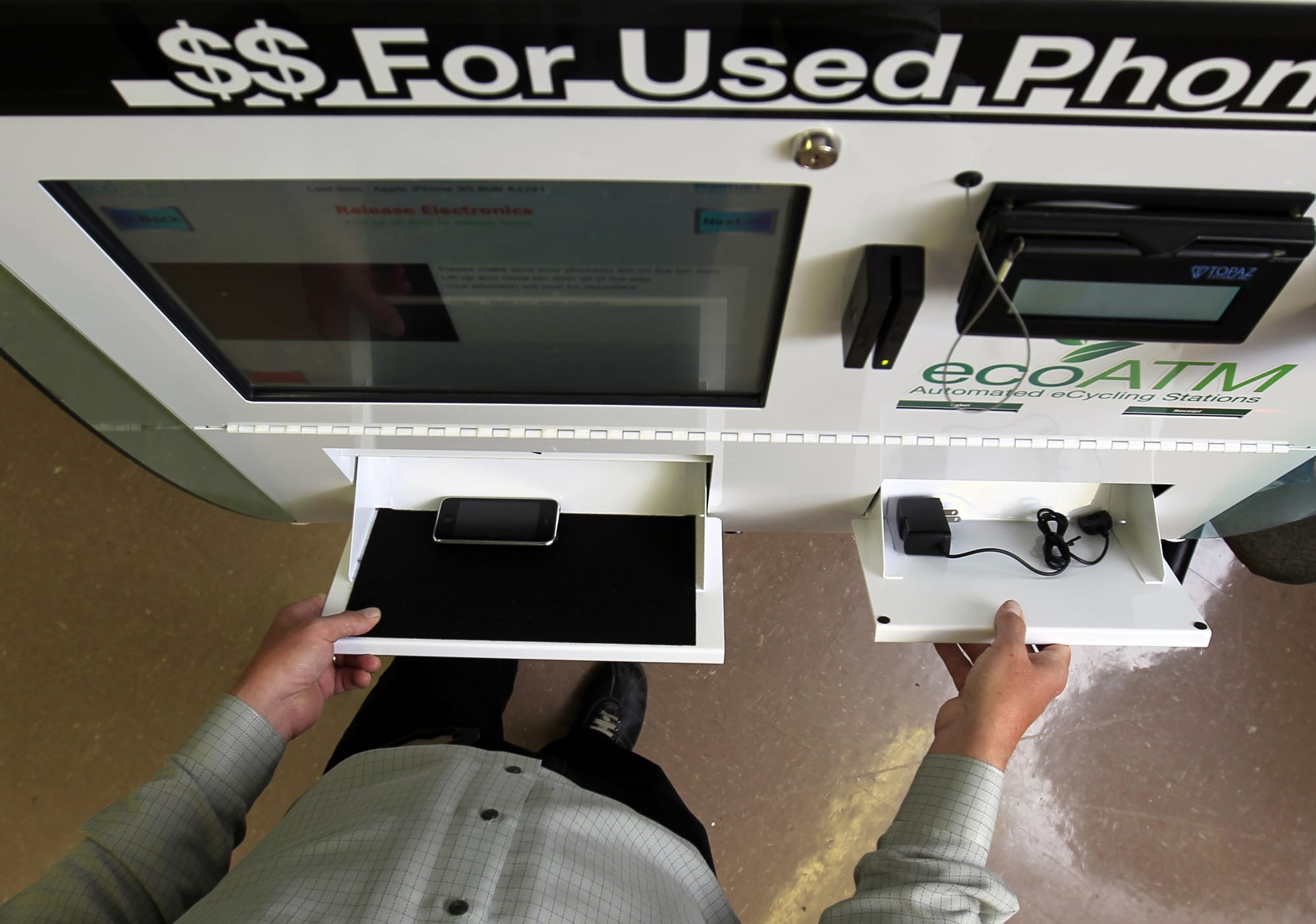
If you’re looking for the littlest hassle and want your money as soon as possible, there are plenty of sites that will automate the trade-in process. You’ll select your device from a list, get a quote within a minute and send the device back for cash in a matter of days.
Decluttr
Decluttr definitely lives up to its name. Not only can you sell phones from a number of manufacturers, including Apple, Samsung and HTC, but the site also takes lots of physical media, including CDs, DVDs, video games and books. For devices, you’ll be asked for a general assessment of its condition, and given a quote immediately. Once you complete your order the site will send you a free shipping label. Decluttr also reaches back pretty far like with sales of the iPhone 6, though it’ll offer you only $5 for an 16GB model in good condition.
uSell
uSell operates as a broker, searching other sites for their best offers on a given device and taking care of the rest. Like most buyback sites, it’s big on iPhones, but you can still sell off other manufacturers’ devices; it really depends on who’s buying them at that point. The selection is a bit of a grab bag — newer phones like the Galaxy S21 aren’t listed, though you can get a quote for the iPhone 11 ($305 for an unlocked, “flawless” 64GB model). Once you complete your order the site will send you a free shipping kit to send out your phone, and you can get paid for the item via PayPal or an old fashioned check.
ecoATM
If you don’t want to have to worry about packaging up your old device and mailing it off, or would like to receive your payout right away, there’s always ecoATM. It’s literally there in the name: an automated machine that you place your device into and it examines the handset and pays you on the spot. It accepts the biggest brands (i.e., Apple and Samsung), along with devices from a wide variety of manufacturers, including LG, Motorola and ZTE. If the machine determines that your device isn’t worth anything at all, you can still use ecoATM to responsibly recycle your old gadget. You’ll find ecoATM kiosks in Walmart stores and malls across the country.
Amazon
While browsing Amazon listings, it’s likely you’ve come across products marked as “refurbished.” Well, if you’ve ever wondered where those come from, a lot of them likely hail from Amazon’s trade-in program. The company will put its own products, like Kindle readers and Fire tablets front and center, but you can also send in phones and gaming products in for an Amazon gift card as well. It’s not great if you want cash, but if you’re looking to upgrade an Amazon device this option is your best bet, as trading in an older device also nets you a 20 percent discount in addition to the store credit.
Apple
This is a good option if you’re looking to upgrade to a newer Apple device. You can trade in iPhones, iPads, Macs and even Apple Watches. That’s notable as wearables are a device category you don’t often see on trade-in sites. Apple will even take your old Android phone if you were thinking of making the switch. The trade-in values are on par with other sites, and you can get your payout in the form of a gift card instead if you’d rather wait before making a new purchase, put it toward media purchases or even just use it in an Apple Store. Which, by the way, also accepts trade-ins in case you’re not comfortable shipping your old but still expensive device.
It’sWorthMore
The nice thing about It’sWorthMore is that its on-site forms handle a larger variety of gadgets than other sites, incorporating companies such as Microsoft, Sonos and even GoPro in addition to standards like Apple, Samsung and Google. You’ll answer a few standard questions about your device’s condition and whether you still have the original box — obviously, the more you’ve kept from the original packaging, the better. You’ll then get a ballpark estimate of its worth and a prepaid shipping label to print out. Once your device is received you’ll generally receive the assessment and payment via check, PayPal or Zelle within two to three business days.
BuyBackWorld
The appeal of BuyBackWorld is that device assessment is a streamlined process: Instead of having to answer a barrage of detailed questions for your device you can just give it a general assessment and let the site handle the rest. Just like with It’sWorthMore, BuyBackWorld will provide a printable shipping label in your confirmation email but, if you don’t have a printer or boxes to pack your device up, you can always have the site send you a free shipping kit, which can handle every gadget the site takes except desktop computers.
GadgetGone
If you’ve read through the other site descriptions, GadgetGone’s modus operandi should be familiar: To sell a product, you’ll have to answer a few questions about what type of device you have and what condition it’s in, after which the site will generate a prepaid shipping label. At least here you can find brands like OnePlus included among the options, and you can also sell MacBooks and Mac Minis here. The site’s biggest gimmick is that you can also send in photos of your pets; you won’t get any additional money but your fur baby (or scaled or feathered friend) may be featured on social media.
Store trade-ins

Sometimes you need your money right now, or just don’t want to trust your device to the vagaries of various shipping companies. There are a few nationwide retailers that accept trade-ins for cash or store credit. Additionally, wireless carriers like Verizon, T-Mobile, AT&T and Sprint will all give you credit toward a new phone.
Best Buy
Best Buy also offers trade-ins both by mail and in-store — with more than 1,000 locations, this might be extremely convenient for you. You fill out the form online and bring that to customer service. It’s easy, but there’s one big downside: You can get your payout only via a Best Buy gift card. This is great if you spend a lot of money with them anyway, but less good if you really need cash.
GameStop
GameStop is infamous for buying games back at ridiculously low prices and flipping them at near retail, but don’t let that stop you from making some quick cash when you need to quickly clear your closet of old electronics and games. And yes, I said cash: GameStop offers store credit, a Visa prepaid card or actual money if you want to take your bounty elsewhere. For example, you can trade in Animal Crossing for the Switch and get $21 in store credit or $17 cash, which isn’t bad when new copies are going for $50 on Amazon. GameStop also accepts phones and connected home devices, though the prices aren’t going to match what you’d get from an online trade-in site.
Consumer to consumer
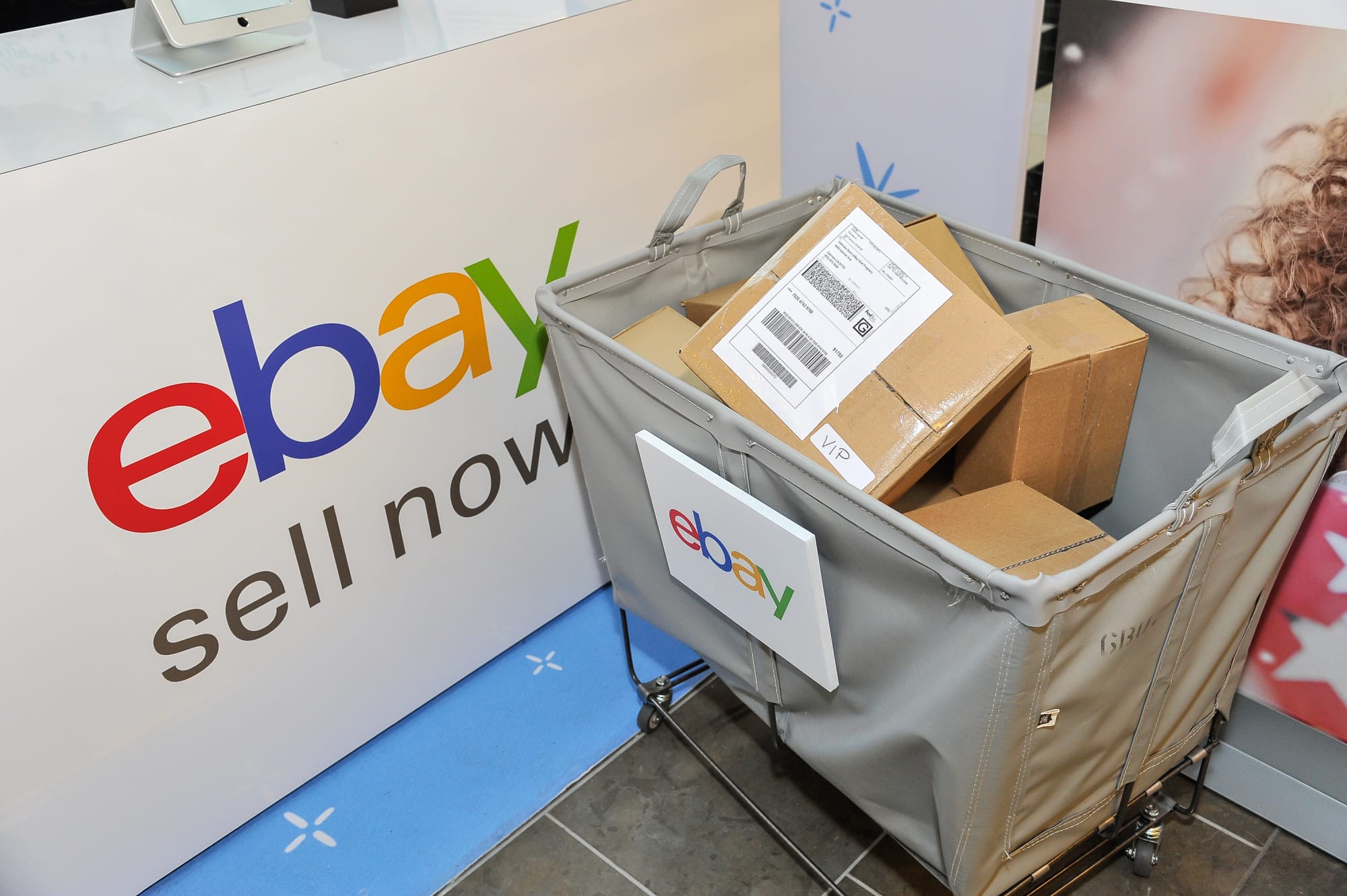
Sometimes you prefer to cut out the middleman and get a bit more personal — a transaction where you’re selling your device directly to another person instead of letting a faceless site flip it for you as a “refurbished” unit. In those cases, you want a site that’s more user-to-user, though a few will still automate certain bits to make your sale as smooth as possible.
Swappa
Swappa is a marketplace site, which means sellers can set their own price. So if you’re getting rid of a newer phone, this is probably the best way to go — the iPhone 13 fetches around $729, for example. That’s a huge improvement over what you’d get selling through a site like Decluttr, which is offering only $506 for a 128GB unit.
Amazon
When shopping on Amazon, you’ve probably been tempted by some of those marketplace deals in the past and, chances are, if you list an item on there, someone will give your old device a look. Since almost everyone on earth seems to have an Amazon account, your potential customer base is huge, and it costs only $0.99, plus a percentage based on category, to sell an item through the site. The downsides are that Amazon isn’t really optimized for individual sales; you’ll be competing with wholesale companies and even bots that will tweak the price of a product automatically in response to the competition.
eBay
eBay is sort of the Wild West of sales sites, but the biggest advantage is that you can sell anything there and hopefully find a buyer, regardless of how old a product is. Even so, the site has come a long way in the past decade or so, adding structured categories that can help lead customers to your product — for phones, you can search by network, color or storage capacity, and even filter for features like 4K video or fingerprint sensors.
In the end, it still works as it always did: You list a product and set an end date for the listing with a minimum price, or just set a “Buy It Now” price if you don’t want to wait to see how an auction turns out. Chances are you already have an eBay account with a feedback score, so there’s no extra setup required on your part. Your first 50 listings are free every month, and you’ll pay 10 percent of the purchase price only if an item sells. The biggest downside is that you’re competing with a lot more sellers, and chances are there’s always someone willing to undercut you on price.
Cash-back comparison
Ultimately, the site you go with should be whatever’s most useful and convenient, but if you just care about how much money you’ll end up with, we’ve priced out a few recent flagship handsets just to give you an idea of what each site offers. We’ve also thrown in the Xbox One X, because it might be time to sell yours off and finally upgrade to an Xbox Series X.
All phone prices are for the lowest storage capacity, either 64GB or 128GB. The prices are for the unlocked models when available, or the carrier where it’s being traded. These are only estimates, and were valid the day this post was written. Prices will fluctuate daily or, in the case of sites like Amazon and eBay, hourly.
|
Apple iPhone 11 Pro Max |
Samsung Galaxy S20+ 5G |
Google Pixel 5 |
Xbox One X (1TB) |
|
|
Decluttr |
$446 |
$292 |
$287 |
$190 |
|
uSell |
$480 |
N/A |
N/A |
$120 |
|
ecoATM |
$265 |
$140 |
$90 |
N/A |
|
Sprint |
$330 |
$225 |
$205 |
N/A |
|
Verizon |
$338 |
$288 |
$195 |
N/A |
|
T-Mobile |
$360 |
$225 |
$190 |
N/A |
|
AT&T |
$330 |
$290 |
$200 |
N/A |
|
Best Buy |
$380 |
$275 |
$250 |
$200 |
|
GameStop |
$369 cash / $461 credit |
$252 cash / $315 credit |
N/A |
$188 cash / $237 credit |
|
Swappa |
$594 |
$540 |
$280 |
$245 |
|
Amazon |
$536 |
$537 |
$309 |
$430 |
|
eBay |
$445 |
$525 |
$300 |
$150 |
|
BuyBackWorld |
$450 |
$300 |
$175 |
$125 |
|
It’sWorthMore |
$463 |
$303 |
$203 |
$180 |
|
GadgetGone |
$465 |
$335 |
$290 |
$160 |
If you were looking to sell some games, we’ve also got a shorter list, because not every site accepts game trade-ins. GameStop will offer you more money than what’s listed below if you’re a member of its Elite or Elite Pro programs.
|
Battlefield 2042 (Xbox Series X/S) |
Horizon Forbidden West (PS5) |
Pokémon Legends Arceus (Switch) |
|
|
Decluttr |
$7.62 |
$28 |
$28 |
|
GameStop |
$1.76 cash / $2 credit |
N/A |
$26 cash / $33 credit |
|
Amazon |
$50 |
$68 |
$51 |
|
eBay |
$10 |
$46 |
$53 |
Once you’ve picked a site and listed your item, there are a few important things to remember before you ship off your device. The most important, when disposing of a phone or laptop or any other device containing personal data, is to do a full factory reset of your device. That also means turning off “Find My iPhone” and the activation lock on iOS devices. See if you can unlock the phone, too; you’ll actually get more money selling a carrier-free device. And finally, make sure you’ve backed up any important data you may have, like contact info, game save data and, of course, photos. Cash is great, but it won’t save your memories.
Images: Mike Blake / Reuters (ecoATM); Alamy (Gamestop); Getty Images for eBay (eBay)
How to recycle your used and unwanted gadgets
You’re probably used to sorting your garbage into bins: green for paper or blue for plastic and glass. But when it comes to electronics, we’re still used to selling those off or tossing them into the trash heap. Unfortunately, our gadget addiction has real consequences for the planet, making it imperative that we dispose of everything responsibly.
Sure, you can try parting with your stuff for cash, but it’s a pain, and it can be tough, if not impossible, to find someone who wants a busted Xbox or 20-year-old CRT. Few places have curbside pickup — in fact, some localities make it illegal to leave electronics for the garbage collectors — so you’re going to have to find a reputable center to take it. We’ve gathered some of the resources to help you dispense of your broken and unwanted computers, televisions and any other gadget flotsam that’s been taking up space in your closet.
National chains
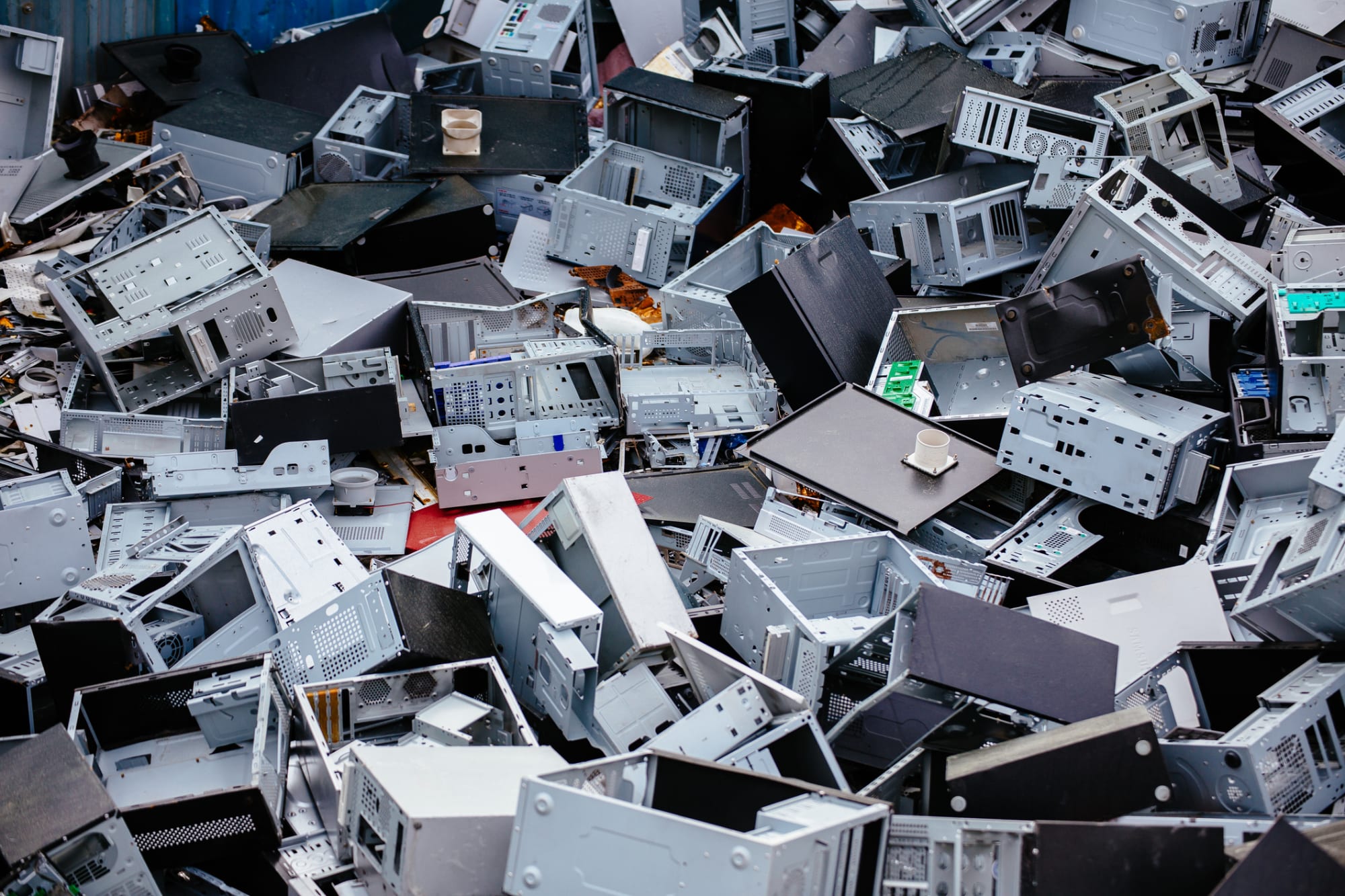
There is no national electronics recycling law at this time, so you won’t find any federal programs to assist you with getting rid of old devices. The USPS does run a program for federal agencies and their employees, but it’s not available to the general public. Instead, the rest of us have to rely on nationwide retailers to toss out our old stuff.
Best Buy
Best Buy has more than 1,000 locations in the United States, so it’s likely you have one nearby where you can drop stuff off. You just need to take it to the customer service counter. They’ll issue you a receipt too, but keep in mind that you can’t claim the drop-off as a deduction on your taxes because Best Buy isn’t a charity.
You can even recycle televisions and monitors, though you’ll be charged a fee of $30 per item to cover the higher costs of transporting and disassembling them. (Consumers in California are not charged the $30 fee, while locations in Connecticut and Pennsylvania will not accept televisions at all.) If you’re turning in a printer, you’ll get up to a $50 voucher toward the purchase of a new Epson EcoTank printer.
Also be aware that Best Buy limits you to three items per household per day, including up to two televisions.
Staples
Recycling your stuff at Staples is similar to Best Buy — just bring your products to the customer-service counter. But it’s more limited in that you can only bring in seven items a day, and the store won’t accept televisions at all. Staples Rewards members also receive a small credit of $2 for every used ink cartridge they turn in, up to 20 a month.
Office Depot
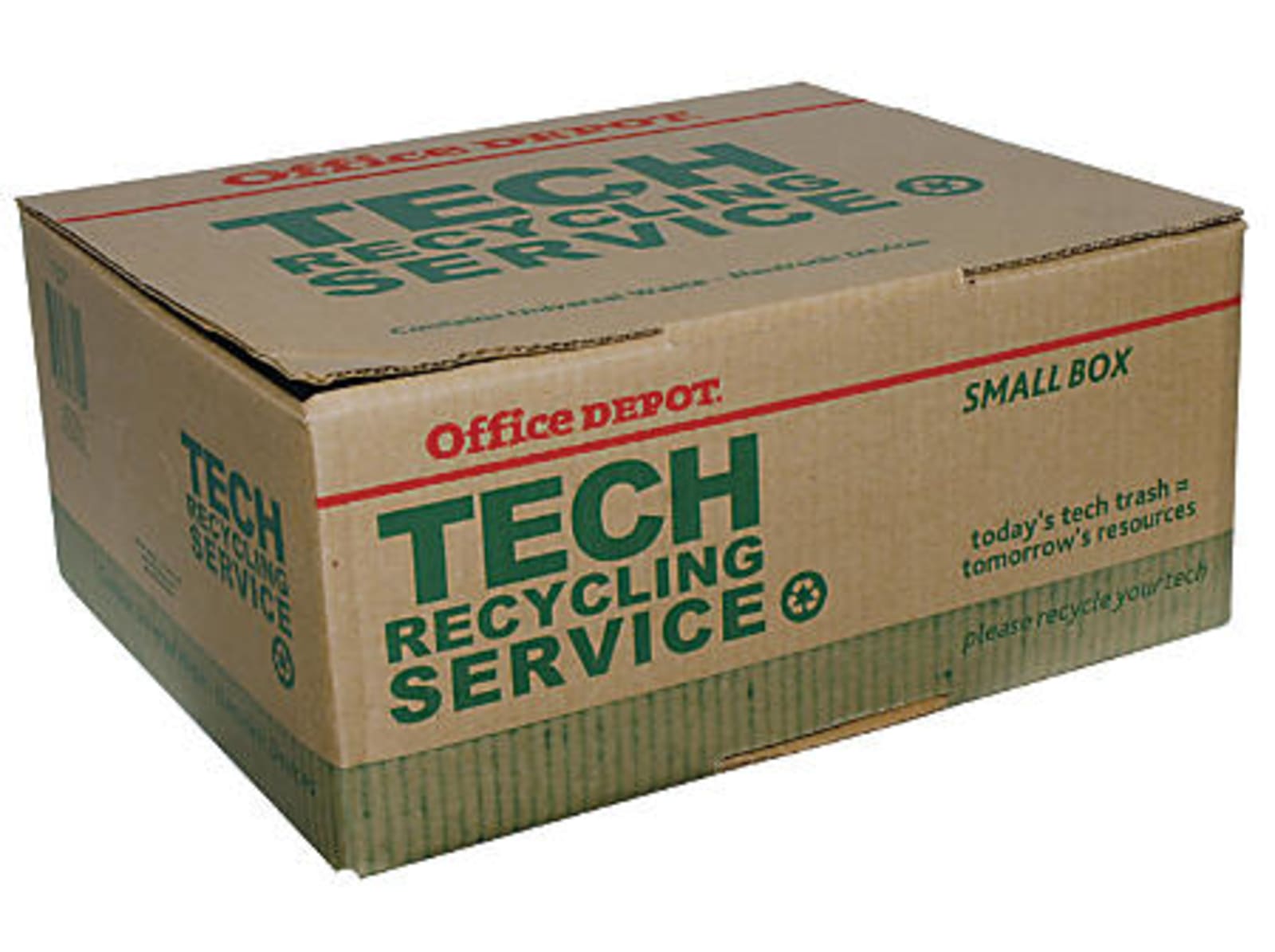
Office Depot has more than 1,300 locations, but unlike Staples and Best Buy, it won’t recycle your old gadgets for free. If you’re only getting rid of a few phones or batteries, those can be turned in at no charge. For everything else, you must purchase a Tech Recycling Box, which costs $5, $10 or $15 depending on the size. Once you have the box, you can fill it with as many items as you want, provided they all fit inside, including smaller televisions. So it’s a great deal if you have a lot of stuff you want to dispose of. These can be turned in either in person or by mail.
Home Depot and Lowes
You can dispose of old rechargeable batteries, old phones and CFL bulbs in the dropoff boxes at any of 2,300 Home Depot or 2,200 Lowe’s locations. The bins are usually located in the front of the store, and Home Depot has an 11-pound limit on individual items.
Manufacturers
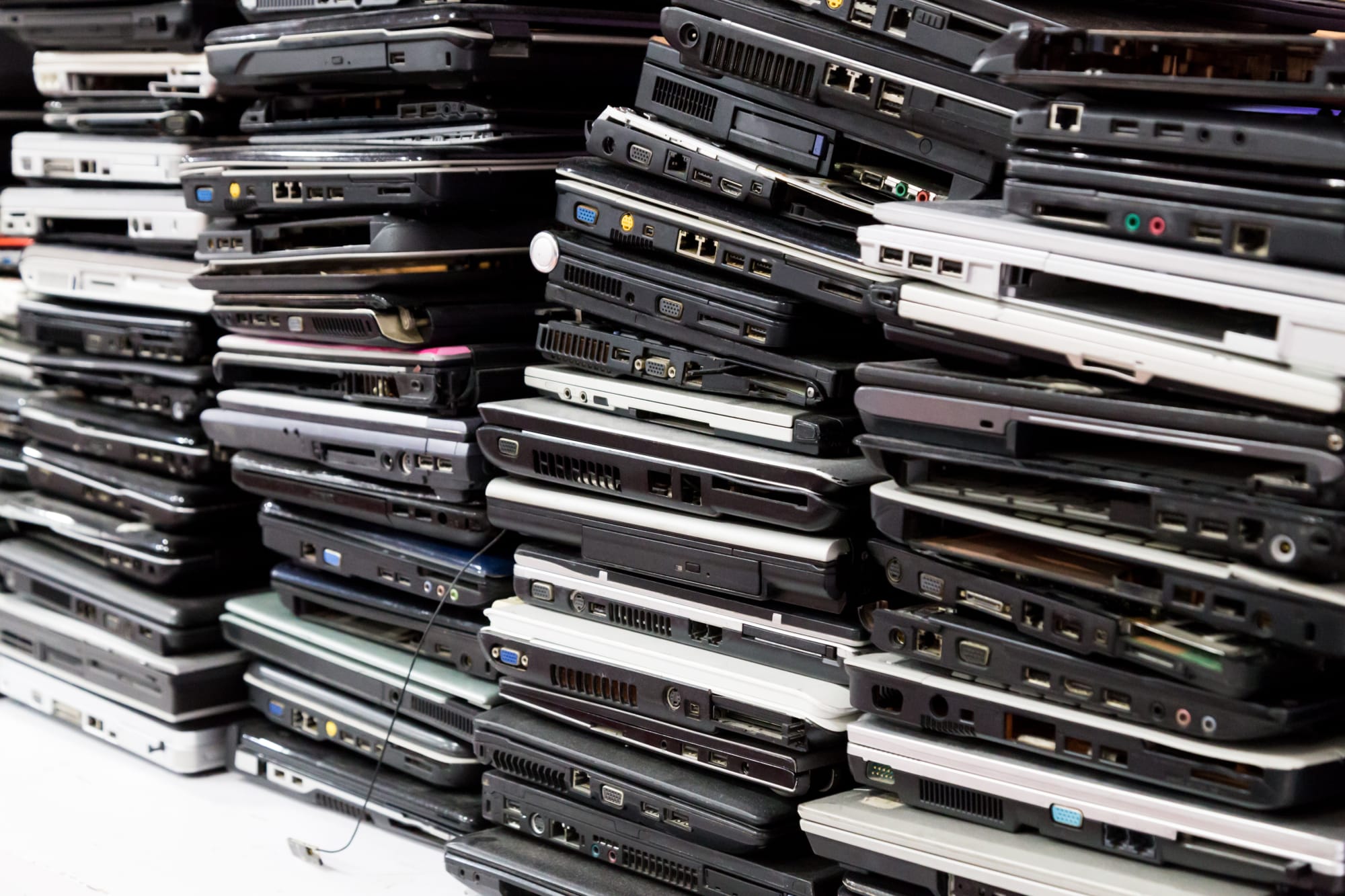
If you can’t make it to a retail location, especially when you need to get rid of only one or two items, many companies offer recycling programs for their own products. They’ll even pay for shipping. Some run their own programs while others use outside organizations. We’ve outlined policies from a handful of manufacturers below.
Amazon
While Amazon would love to direct you to its trade-in program, you’re probably reading this post because there’s stuff you can’t sell, and for those items Amazon offers mail-in recycling. You can send in your busted Kindles, Fire TVs and even Dash Buttons, as well as select peripherals like keyboards and mice. You’ll just need to fill out some forms online and generate a shipping label, which you can slap on any box. Drop it off at a UPS location, and you’re good to go; Amazon will cover all the costs.
Apple
If your iPhone or MacBook is still in good shape, you should consider selling it, but if it’s old or beat up you can still score a gift card by turning it into Apple’s recycling program. For iPhones, iPad and Apple Watches you’ll be asked to fill out a form attesting to the product’s condition and given a trade-in quote, with a working iPhone 5 going for $35 and an iPhone 7 Plus scoring you $315. For Macs, you’ll be asked to provide a serial number as well. Though Apple won’t give you cash for anything it deems old or unacceptable, you can still mail it in or bring it to any Apple Store so it can be responsibly disposed of.
Dell
Dell offers drop-off recycling via a partnership with Goodwill. Not every location participates, but there are more than 2,600 that do. And, because it’s a charity, you may even be able to deduct it as a donation on your taxes. Dell also has a mail-back program on its site where you can generate a shipping label and drop the package off at a FedEx location instead.
Epson
You can ship old products back to Epson by simply creating a shipping label on its site and dropping it off at a FedEx location. Or just drop it off at a Best Buy location for a $30 or $50 voucher toward a new Epson printer.
HP
If you can, HP recommends taking its products to the nearest Best Buy. But if that’s not feasible, the company participates in a program that will even buy back some items. You’ll be asked to fill out a form with the make, model and condition, and the recycler will email you a prepaid shipping label to mail the package within 30 days. If you’re doing a buyback you’ll receive a paper check in the mail. Because this isn’t an in-house program with HP, you can also send in items from other companies — check the drop-down list for firms like Canon and Toshiba as well as more obscure and out-of-business manufacturers.
Other manufacturers
Many other companies use outside recyclers to dispose of their products, and you’ll often see the same names popping up again and again across different manufacturers. This should simplify things in some cases — you should be able to send in products from multiple sources in one package. You just need to fill in the make and model to generate a prepaid shipping label. However, different states have different rules on what you can return, so the drop-downs for selecting your product may vary by area.
Two major recycling companies you’ll notice a lot are RLGA, which covers Acer, Canon, Google, Intel, Lenovo, Microsoft and Motorola, and MRM, which recycles products for Alcatel, BlackBerry, Barnes & Noble (nook), TCL and Toshiba.
Phones
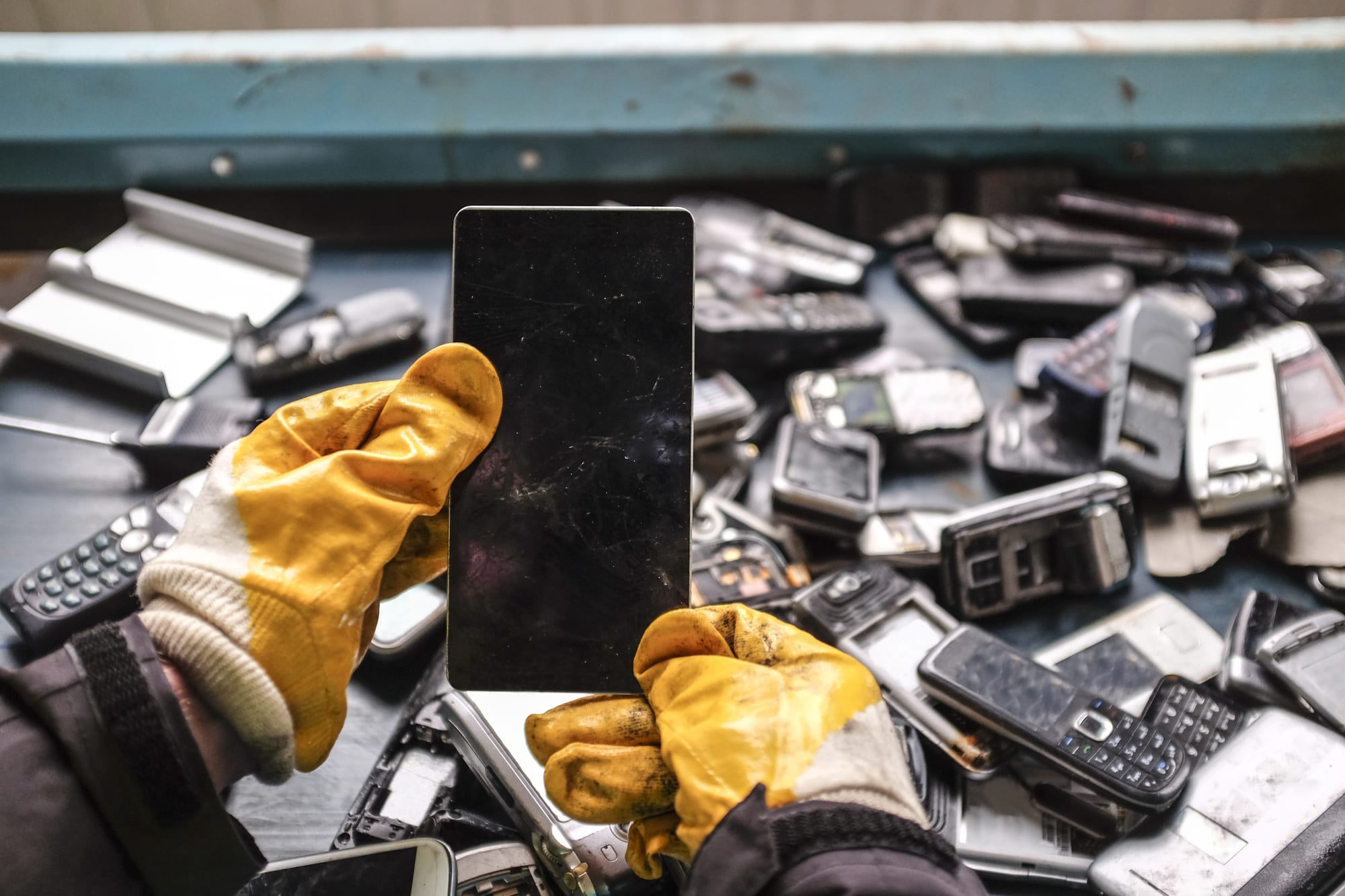
Cell phones are the easiest gadget to recycle — if you haven’t already decided to sell yours off on eBay or via sites like Decluttr and ecoATM. But, if you can’t or won’t make some cash off of it, you can send it to:
Call2Recycle, which has drop-off centers all over the country in many chain stores, including Lowes and Home Depot. It will also accept rechargeable batteries.
Cell Phones for Soldiers accepts phones in any condition and sells them to refurbishers or recyclers. The proceeds go toward purchasing phone cards for troops so they can call their friends and family back home. To be clear, the phones are not given directly to the soldiers.
The four major US carriers — Verizon, AT&T, T-Mobile and Sprint — all offer free recycling. You can trade in your old device in-store or send it in for a credit toward a new phone, or let them straight up recycle it. AT&T also participates in Cell Phones for Soldiers.
If you do decide to try your luck with ecoATM to see if your old phone is still worth a few bucks and it turns out it’s worth nothing, you can at least rest easy knowing that the company will also recycle your phone responsibly.
States
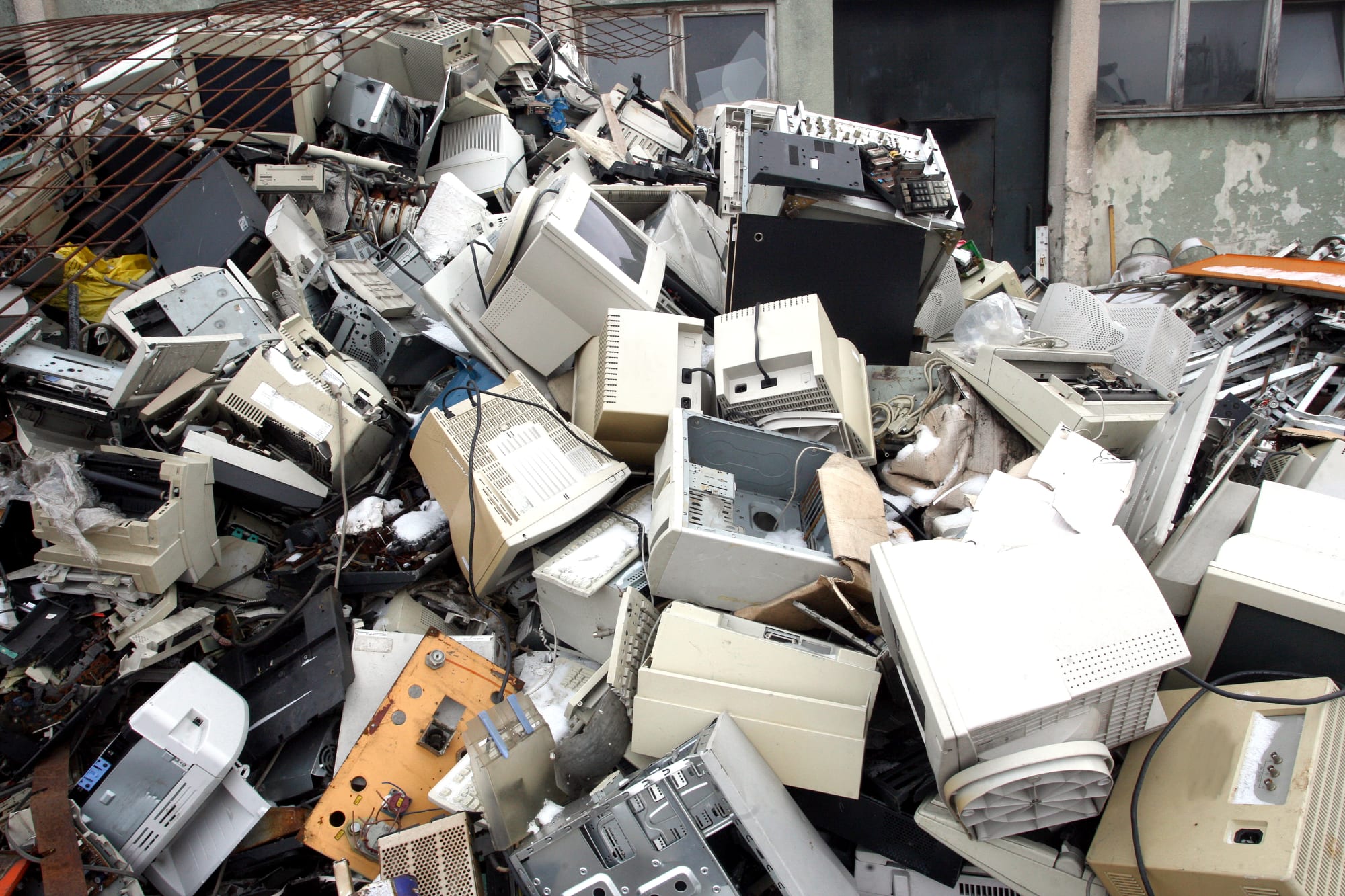
There may not be a national law dictating that you must recycle your electronics, but at least 26 states have passed rules that vary widely on what they demand of manufacturers and consumers. Almost all states that do collect products for recycling provide this service free, with the bill footed by the companies in some way. Most provide some local programs to help you get rid of your stuff, regardless of whether recycling your gadgets is required or optional.
States where you can no longer dispose of electronics in the regular trash and must recycle them include: California, Connecticut, Illinois, Indiana, Maine, Minnesota, New Jersey, New York, North Carolina, Oregon, Pennsylvania, Rhode Island, South Carolina, Vermont, West Virginia, Wisconsin and the District of Columbia.
The following states have laws requiring manufacturers to pay for recycling, but you, the consumer, are not actually required to recycle your electronics: Hawaii, Maryland, Michigan, Missouri, Oklahoma, Texas, Utah, Virginia, and Washington.
The following states have some special circumstances worth noting:
Connecticut: Does not allow recycling centers to charge you a fee for turning in electronics, so many organizations and retailers that would usually charge for recycling televisions and monitors do not accept them. Because you cannot dispose of them curbside, you can take them to a municipal transfer station for free.
New York: If you live in a New York City apartment building with 10 or more units, contact your landlord about getting an ecycleNYC drop-off box installed in your building. It’s super convenient and free.
Pennsylvania: Does not allow retailers to charge you a fee to recycle, so places like Best Buy and Staples will not accept televisions or monitors. Many recycling centers have also closed as a result of underfunding. Some nonprofit recyclers may still accept the items, and you should check to see if your local government is hosting any drop-off events. Lancaster and Dauphin Counties also still run civic recycling programs.
Virginia: This state does not have a dedicated statewide recycling program, but some localities run their own programs including Fairfax, Loudoun and Rockbridge counties, and cities like Arlington. Check each municipality’s site for details.
Toddlers can get their frag on with VTech’s baby gamer chair
Kids love to imitate the adults in their lives. That’s why you can find such odd items in the toy aisle as baby-sized irons, mops and vacuums. Now you can add more weirdo item to that list, one that has some members of the Engadget staff howling with laughter: A baby gamer chair. Yes, you read that right. Baby. Gamer. Chair.
VTech, long-time purveyor of kiddie tablets and educational toys is now selling a tiny gaming chair for budding streamers and future Fortnite players. The $50 Level Up Gaming Chair is a plastic simulacra of bigger leather seats made for adults, complete with slick black armrests and a molded back with two cut-out sections for air flow. However, instead of wheels, the chair rests on four boot-like blue feet, so your baby won’t be tipping over while they’re pretending to curse out other players on the included headset. The tiny non-functional headset even has a tiny non-functional mic to complete the look.
Because this is VTech after all, the Level Up Gaming Chair has some interactive electronic parts, namely a light-up keyboard that kids can play with to learn numbers and letters and even piano keys — which we admit, is actually a step up from traditional mechanical gaming keyboards. The keyboard console can be detached for on-the-go play, and the tray it normally rests on can be used for snack time as well so kids never have to leave their gaming throne when it goes on sale this fall. (We recommend pairing it with Fisher Price’s Laugh and Learn Controller.)
‘Mar10 Day’ sales knock up to 83 percent off Nintendo Switch titles
Mario has a lot of days worth celebrating — he made his first appearance in Donkey Kong way back in July 1981, while the first Mario Bros. title came out in July 1983 and Super Mario Bros. hit the scene in September 1985. So to make things easier Nintendo settled on March 10th as a day to celebrate all things Mario — written as “Mar10” for this now-yearly occasion. This year’s celebration is a bit of a subdued affair, but if you’re looking to save on some popular games, head on over to Amazon to order some normally $60 titles for only $40, a 33 percent discount.
Buy New Super Mario Bros. U Deluxe at Amazon – $40Buy Mario Kart 8 Deluxe at Amazon – $40Buy Luigi’s Mansion 3 at Amazon – $40
Last week our deputy editor Nate Ingraham named Super Mario Bros. U Deluxeas one of his all-time faves for the Nintendo Switch, and right now you can snag it for only $40. Also for grabs at the same price are the must-have Mario Kart 8 Deluxe, 2019’s Luigi’s Mansion 3,Super Mario 3D World + Bowser’s Fury and Yoshi’s Crafted World.
Sports fans might also want to add Mario Tennis Aces to their collection for only $40 — unfortunately there are no deals on upcoming titles like Mario Strikers: Battle League. Another standout is Mario Kart Live: Home Circuit, which usually costs $100 for a single kart set but you can grab Mario or Luigi for $60 each right now.
Titles on sale at other retailers include the delightful Mario + Rabbits Kingdom Battle for only $10 over at Nintendo.com, and you can grab Super Mario Odyssey for $48 at Walmart if you’re one of the Switch owners who doesn’t own a copy yet.
Buy Mario Tennis Aces at Amazon – $40Buy Mario Kart Live: Home Circuit at Amazon – $60Buy Mario + Rabbids Kingdom Battle at Nintendo – $10Buy Super Mario Odyssey at Walmart – $48
Follow @EngadgetDeals on Twitter for the latest tech deals and buying advice.
Apple’s new iPad Air vs. the Galaxy Tab S8 and Fire HD 10
Since you’ve been spending so much time at home these past two years, you could probably use a better tablet for when you’re kicking back on the couch or hanging out in the yard. And Apple’s new iPad Air might just be the screen you need in front of yo…
The iPhone SE vs. the competition: Battle of the mid-range
The past few years have seen the major phone manufacturers release handsets that were low on price but big on features — basically flagship phones at a mid-range price. Today Apple announced an update to its own offering, the iPhone SE. It packs in the powerful Apple A15 Bionic, 5G connectivity and a dedicated home button, while coming in at a nice affordable $429 to start.
But the SE isn’t the only stunning midrange phone; Samsung has offered up a slew of affordable handsets for years now, and Google continues its line of “a” phones with the 5a. And if you’re outside the US, you may even have the option of picking up a OnePlus Nord 2. We’ve taken all of these outstanding affordable phones and lined their specs up in the table below so you can get an idea of the power on offer, but make sure you check out our review of the new iPhone SE when it drops later this spring.
|
iPhone SE |
Pixel 5a with 5G |
Galaxy A52 5G |
OnePlus Nord 2 |
|
|
Pricing |
$429 / $479 / $579 |
$449 |
$500 |
£399 (no US release) |
|
Dimensions |
138.4 x 67.3 x 7.3 mm (5.45 x 2.65 x 0.29 inches) |
156.2 x 73.2 x 8.8 mm (6.1 x 2.9 x 0.3 inches) |
159.9 x 75.1 x 8.4 mm (6.30 x 2.96 x 0.33 inches) |
159.12 x 73.31 x 8.25 mm (6.26 x 2.89 x 0.32 inches) |
|
Weight |
144g (5.09 ounces) |
183g (6.46 ounces) |
189g (6.67 ounces) |
189g (6.67 ounces) |
|
Screen size |
4.7 inches (119.4 mm) |
6.34 inches (161 mm) |
6.5 inches (127 mm) |
6.43 inches (163.3 mm) |
|
Screen resolution |
1,334 x 750 (326 ppi) |
2,400 x 1,080 (413 ppi) |
2,400 x 1,080 (407 ppi) |
2,400 x 1,080 (410 ppi) |
|
Screen type |
Retina HD LCD |
OLED |
AMOLED |
Fluid AMOLED |
|
Battery |
Up to 15 hours, mAh unknown |
4,680 mAh |
4,500 mAh |
4,500 mAh |
|
Internal storage |
64 / 128 / 256 GB |
128 GB |
128 GB |
128 / 256 GB |
|
External storage |
None |
None |
microSD up to 1 TB |
None |
|
Rear camera(s) |
Wide: 12 MP, f/1.8 |
Dual pixel: 12.2 MP, f/1.7 |
Main: 64 MP, f/1.8 |
Main: 50 MP, f/1.88 |
|
Front camera(s) |
7 MP, f/2.2 |
8 MP, f/2.0 |
32 MP F/2.2 |
32 MP, f/2.45 |
|
Video capture |
4K at 60 fps |
4K at 60 fps |
4K at 30 fps |
4K at 30 fps |
|
SoC |
Apple A15 Bionic |
Qualcomm Snapdragon 765G |
Qualcomm Snapdragon 750G |
MediaTek Dimensity 1200-AI |
|
CPU |
3.23 GHz hexa-core |
2.4 GHz octa-core |
2.2 GHz octa-core |
3.0 GHz octa-core |
|
GPU |
quad-core Apple GPU |
Adreno 620 |
Adreno 619 |
ARM G77 MC9 |
|
RAM |
4 GB |
6 GB |
6 GB |
6 / 8 / 12 GB |
|
WiFi |
802.11ax |
802.11ac |
802.11ac |
802.11ax |
|
Bluetooth |
v5.0 |
v5.0 |
v5.0 |
v5.2 |
|
NFC |
Yes |
Yes |
Yes |
Yes |
|
Operating system |
iOS 15 |
Android 11 |
Android 11 |
Android 11 |
|
Other features |
IP67 certified, Lightning port |
IP67 certified, USB-C |
IP67 certified, USB-C |
USB-C |
Catch up on all of the news from Apple’s Peek Performance event right here!
